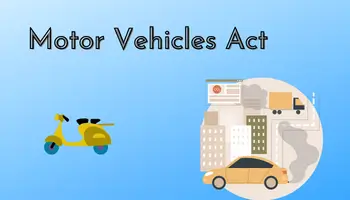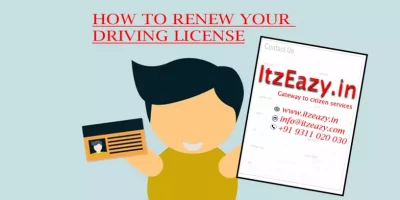Are you aware of the laws that govern vehicles and drivers in India?
The Motor Vehicles Act, passed by the Indian Parliament, covers a wide range of critical aspects, from obtaining a driving license to vehicle registration, road safety, and more.
We can help you understand how these laws affect you and the recent amendments. Let’s dive into the details of the Motor Vehicles Act.
Keep reading to discover what you need to know about the Motor Vehicles Act and how it affects your life on the road.
Motor Vehicles Act
With time and age, there were numerous advancements in Indian road transport technology and road infrastructure, as well as changes in vehicle population, traffic movement and passenger transport patterns. Therefore, the previous Act needed to be revised to include all new methods relevant to vehicles in India. Therefore, the new Motor Vehicles (Amendment) Bill of 2019 was introduced in Lok Sabha on the 15th of July 2019 by the Minister for Road Transport and Highways. The Bill seeks to amend the Motor Vehicles Act of 1988 to provide for road safety policies and third-party insurance.
The Motor Vehicles Act of 1988 became operative from 1st of July, 1989. It replaced the Motor Vehicles Act of 1939 which earlier replaced the first such enactment of the Motor Vehicles Act of 1914. The latest act is called the Motor Vehicles Act of 2019 which is similar to the Motor Vehicles (Amendment) Bill of 2017.
Purpose of the Motor Vehicles Act
The main reasons behind drafting and enacting the Motor Vehicles Act in India include: –
- The rapidly increasing vehicle population in India.
- The need for enhanced technology in the automotive sector.
- A need for effectively tracking down traffic offenders and providing more deterrent punishment for certain traffic violations.
- A growing concern for the framing of stringent standards around vehicle parts, road safety, and pollution control.
- There was a necessity for providing regulations around the registration of drivers and the need for stricter provisions before granting any type of driving licence.
- The Indian vehicle registration system also needed to be changed. A new system was put in place for registration marks and maintaining state registers for driving licenses and vehicle registration.
- The Act was also introduced to make it easier to get permits for all vehicles carrying goods and passengers, and to simplify the definitions of different types of vehicles in India.
Key Provisions of the Motor Vehicles Act, 1988
The Motor Vehicle Act of 1988 was created to solve the following problems:
- Adhering to the strict procedures for issuance of driving licences and calculating the validity period of such licences.
- To maintain road safety requirements; dangerous and explosive material transportation regulations, and pollution control standards.
- To maintain India’s rapidly growing population of personal and commercial cars.
- Raising the compensation available for hit-and-run cases.
- To eliminate the time limit for traffic accident victims to file for a compensation claim.
The salient features of the Motor Vehicle’s Act of 1988 are: –
- All vehicle drivers in India must have a valid driving licence as per the Act, and no vehicle should be driven unless it is registered under the Motor Vehicle Act.
- This also requires the registration of all vehicles under the Act, which have a 15-year validity duration and can be renewed for another 5 years.
- Motor insurance must have at least third-party insurance to register and drive a car on Indian roads.
Offences covered under the Motor Vehicle Act
Some of the offences covered under the Motor Vehicle Act of 1988 are: –
- Driving without a licence or driving with an expired licence.
- Allowing someone without a licence to drive a vehicle owned by the vehicle owner,
- Not carrying all of the relevant documents required to drive a vehicle on Indian roads,
- Driving without a valid permit,
- A minor driving a vehicle,
- Driving after being disqualified by authority,
- Traffic violations,
- Over speeding/Dangerous driving/Rash driving,
- Not obeying the orders of the traffic personnel and so on.
Motor Vehicles Act of 2019
The Motor Vehicle’s Act of 2019 envisages body cameras on traffic cops and RTO officials to check corruption; compulsory third-party insurance for all vehicles; and a three-fold increase in fines for traffic violations to reduce accident rates. The Ministry of Road Transport and Highways issued the latest amendments to the Central Motor Vehicles Act Rules of 1989 on 15th of February 2022. They became operational from 1st of April, 2022 as the Motor Vehicle’s Act of 2019.
Salient Features of the Motor Vehicles Act, 2019
-
Driving licenses:
Under the 1988 Act, a driving license is valid for 20 years, or till the person reaches the age of 50 years, whichever is earlier. After the age of 50, the license is valid for a period of another 5 years. The 2019 Act amends this to create various categories for the validity of licenses. If an individual applying for the license is: –
- below 30 years, the license will be valid till the person attains the age of 40;
- between 30 and 50 years, the license will be valid for 10 years;
- between 50 and 55 years, the license will be valid till he turns 60 years;
- above the age of 55 years, the license will be valid for 5 years.
-
Aggregator licenses:
The Act defines an aggregator as a digital intermediary. A passenger may avail of aggregator’s services to connect with a driver for transportation purposes. State governments will grant licenses to the aggregators as per the guidelines framed by the Central government. The aggregators will also be required to abide by the IT Act of 2000.
-
Recall of vehicles:
The Act allows the Central Government to order for the recall of vehicles if a defect in the vehicle may: –
- cause environmental damage,
- harm to the driver itself or to other road users, or
- is reported to the Central government as it is.
The manufacturer will have to
- Pay the buyers the full cost of the vehicle, or
- Replace the faulty vehicle with another vehicle with similar or better specifications.
-
Good Samaritan Law:
TheAct defines a Good Samaritan as an individual who renders medical or non-medical emergency assistance to the victims of crashes and road accidents voluntarily without expecting a reward.
The Act has guidelines for the protection of Good Samaritans now called the Good Samaritan Law. The Law provides awards and protection to good Samaritans from harassment against the actions taken by them to save victims.
-
Electronic facilities:
The Act provides for the computerization of certain services. These include: –
- Issuance of licenses or permits,
- filing applications (such as for licenses and registration),
- Challan (such as fines),
- Change of details and so on.
The Act mandates State Governments to ensure the electronic monitoring and enforcement of road safety on national highways, state highways, and urban roads. The Central Government will devise regulations for such monitoring.
-
Penalties:
The Act introduced a three-fold increase in penalties for several offences. For example, the maximum penalty for drunk driving has been increased from Rs 2,000 to Rs 10,000.
-
Compensation and Insurance:
The Bill also changes the compensation and insurance provisions in case of vehicle accidents.
FAQs
Q1: What is the Indian Motor Vehicle Act?
A1: The Indian Motor Vehicle Act is a law that governs all aspects of vehicles and their drivers in India.
Q2: What are the main points of the Motor Vehicle Act 1988?
A2: All vehicle drivers in India must have a valid driving license, all vehicles must be registered, all vehicles must have third-party insurance, and there are penalties for traffic violations.
Q3: What is the importance of the Motor Vehicle Act?
A3: The Motor Vehicle Act is important for ensuring road safety and regulating traffic in India.
Q4: When did the Motor Vehicle Act start?
A4: The Motor Vehicle Act was first enacted in 1939 and was amended in 1988.
Q5: What is the fine for MV Act 181?
A5: The fine for MV Act 181 (driving without a license) is up to Rs. 5,000.




Leave a Reply